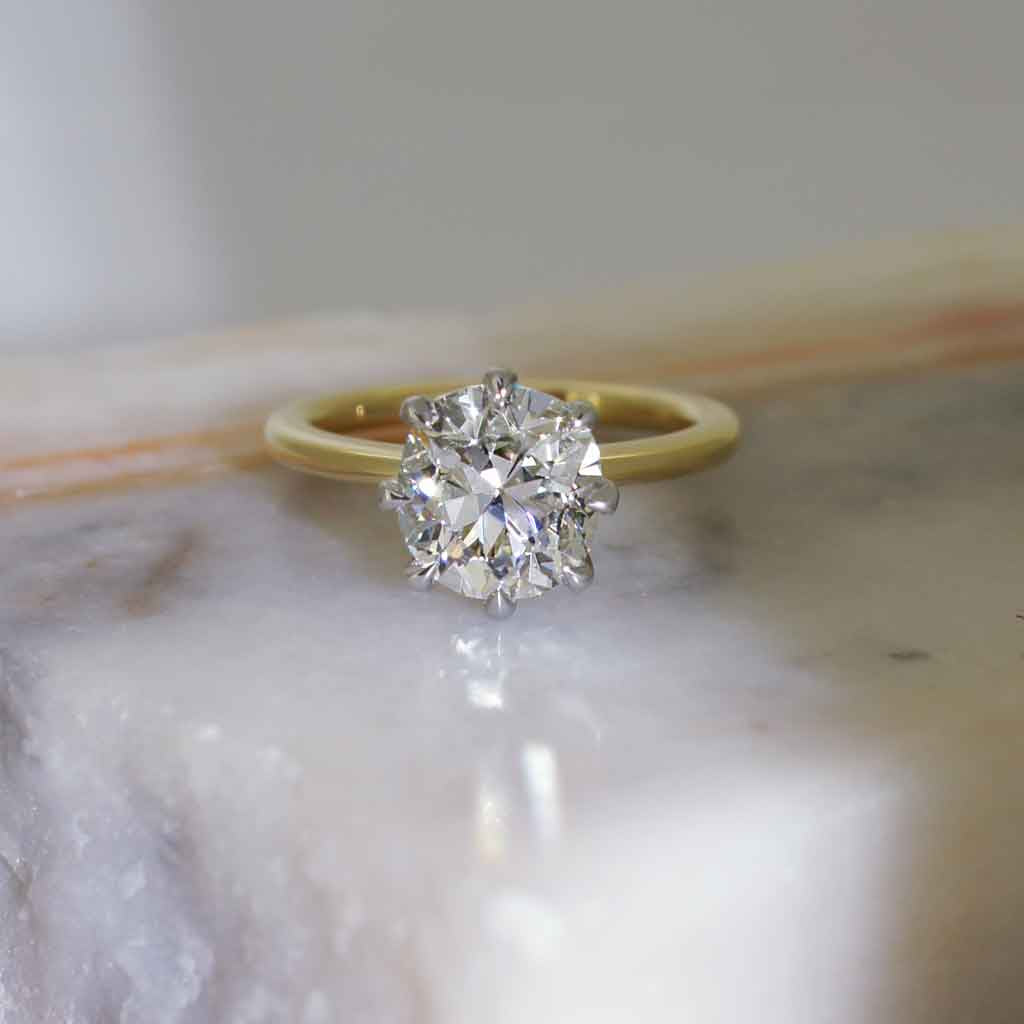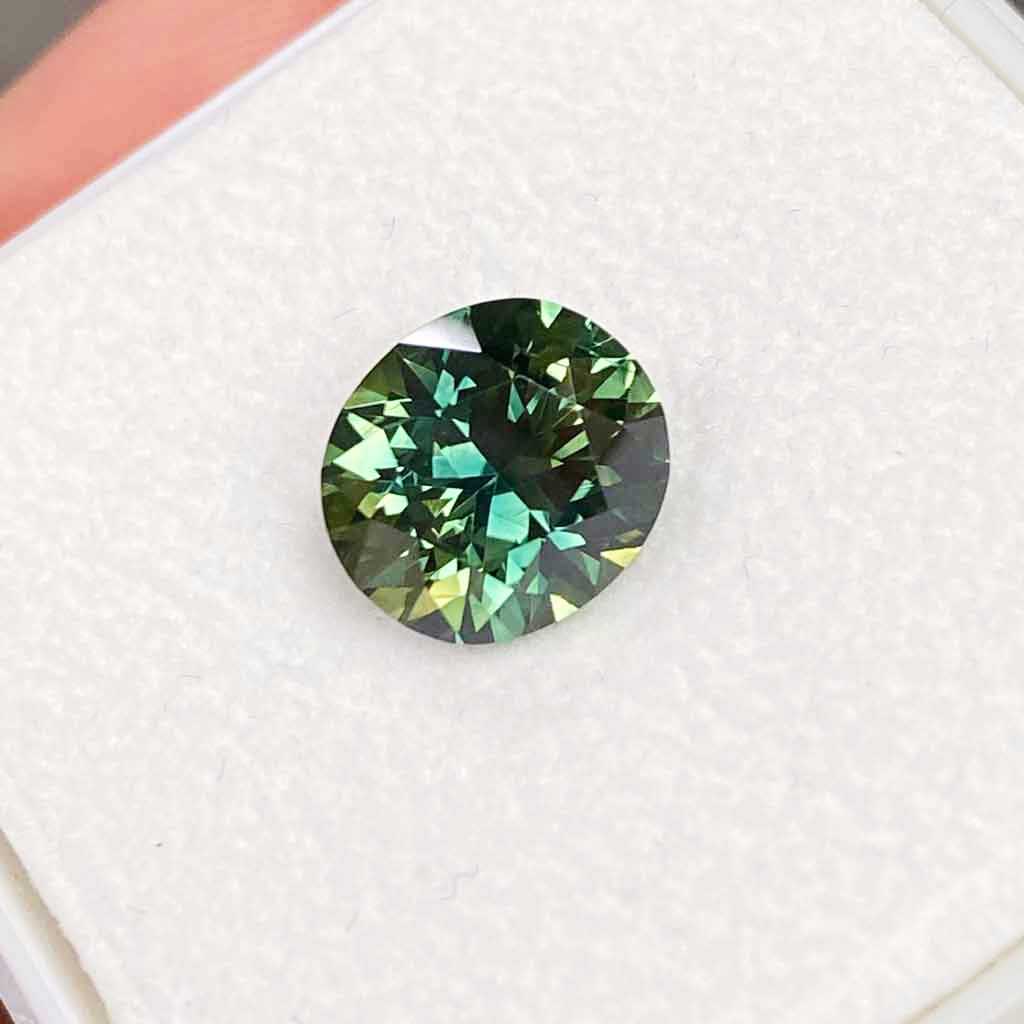
The 4Cs of white diamonds
Diamonds have an enduring, universal appeal and have been used in jewellery, including engagement rings, for centuries. Diamonds are a desirable gemstone and often a status symbol signifying their owners' success. Diamond engagement rings have been popularised by the 1947 advertising campaign by De Beers, 'Diamonds Are Forever". Buying diamonds can be a significant investment and there are many factors to consider - the main criteria are the so called 4Cs used to grade diamonds: colour, clarity, cut and carat weight, which have a significant influence on a diamond's price. Here we explore the big four: The 4Cs of white diamonds.
The 4Cs of white diamonds
Colour
When talking about colour range in white diamonds what we are actually looking for is the absence of colour. A truly colourless diamond is extremely rare and highly prized. Most diamonds possess varying degrees of colour creating differences in value. The highest grade for a diamond with absolutely no colour is D and letter grades are assigned alphabetically all the way down to Z. An ‘icy white’ diamond is typically D, E or F. However, some people like the ‘warmth’ of an I, J or K colour. An important factor to consider when choosing the colour grade of a diamond is the metal colour it will be set in. Yellow or rose gold are very good at disguising lower colour grades and making those diamonds appear whiter than they would look if set into platinum or white gold. We recommend higher colour grade diamonds when working with platinum and white gold, as lower colour diamonds look visibly yellow compared to the bright silvery colour of these metals. Within a given budget, you should seek the best balance of clarity, cut and carat to find the perfect diamond for you.
Clarity
Diamond clarity is symbolic of ‘purity’ - the more flaws, the less valuable the diamond. Flawless, VVS (Very Very Slightly included), VS (Very Slightly included) and SI1 (Slightly Included 1) have the least inclusions or flaws. SI2 (Slightly Included 2) is borderline where inclusions may become visible to the naked eye. I (Included) rated diamonds have obvious inclusions or flaws visible to the naked eye. Within any given budget there's a balance between purchasing a stone with the right combination of colour and clarity. Judging a diamond's clarity just by the certificate values can be misleading, as diamonds with lower colour grading can still appear to have no inclusions when viewed by the naked eye (ie eye clean), due to the inclusions being colourless, and an experienced eye is required to select the right diamond.
Cut
Of all the 4Cs, cut has the greatest effect on a diamond’s beauty. Two diamonds of the same size, colour and clarity will look visibly different depending on their cut – one may look brilliant and bright, the other dull and drab. The better quality the cut, the more brilliance and beauty the diamond will have. Diamond cut grading runs from Excellent to Poor, with Excellent cut diamonds possessing correct proportions and an even pattern of bright and dark areas. A diamond that is cut is too shallow, with an overly large spread for its carat weight will “leak” light through the sides or bottom of the stone, while a well-cut and proportioned diamond will reflect out the light through the crown, resulting in superior brightness, fire and scintillation. Brightness is the measure of light reflected from a diamond. Fire refers to the scattering of white light into all the colours of the rainbow. Scintillation is the amount of sparkle that a diamond has, and reflections inside the diamond resulting in a particular pattern of dark and light areas. Diamonds that are step cut, such as asscher and emerald cut, show inclusions much more than brilliant cuts, such as round, pear and oval, so a lot of care must be taken when selecting step cut diamonds.
Carat
Diamond carat is the standard used to measure diamond weight. A carat equals 1/5 of a gram. As diamonds increase in size, their cost tends to increase exponentially. Weight does not always enhance the value of a diamond - particularly if it is cut badly. Indeed a good cut can enhance the perceived size of a diamond. Some diamond cuts appear larger than their carat weight might suggest, eg oval and marquise cut diamonds have larger spread for their carat weight than round brilliants and cushion cut diamonds.
Diamond fluorescence
Beyond the 4Cs, another factor that has a significant bearing on a diamond's price is fluorescence. Diamond fluorescence is the tendency for the stone to glow when it is subjected to ultraviolet rays from sources like the Sun and fluorescent lamps. It looks like a bluish, a yellow or orangey hue. Once the ultraviolet light source is removed, the diamond stops fluorescing. The element that creates this effect is boron and only about 30% of diamonds exhibit some degree of fluorescence. It grades from None, Faint, Medium to Strong and Very Strong. Generally, the presence of fluorescence is undesirable, however if we compare two diamonds that have the same lower colour grade, the diamond that has blue fluorescence will have a whiter face-up appearance, as the blue hue helps mask a yellowish tint. Yellow fluorescent hue will enhance a yellowish colour of a lower colour grade diamond. Provided the right characteristics are present, diamonds with fluorescence can present great value for money.
Choosing the right diamond for you
When it comes to choosing a diamond for your engagement ring or a piece of bespoke jewellery, the multitude of factors and nuances can make the process rather overwhelming, as there is a significant emotional and financial cost involved. We are here to make it easy and take away the stress! We will be happy to help you select the right diamond from our extensive local and international networks of ethical suppliers, and deliver not only a stunning ring you will be delighted with, but also the best value for money. Feel free to email us to enquire, or book a complimentary bespoke diamond engagement ring appointment with us. Image and ring: lizunova.com












